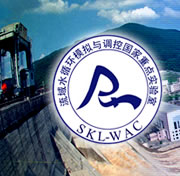《Journal of Geotechnical and Geoenvironmental Engineering》杂志刊登“土工合成材料排水层对于路段水分分布和塑性变形影响的数值模拟”
作者:M. Bahador; T. M. Evans and M. A. Gabr
刊物:《Journal of Geotechnical and Geoenvironmental Engineering》,2013年9月,139卷第9期,1407–1418页
关键词:变形;土工合成材料;水分;路面;加筋;路基;吸力
摘要:本文用数值模拟的方法研究了土工合成材料层对已铺设和未铺设路段水分分布和塑性变形的影响。土工合成材料层从上到下依次包括以下几个部分:传输层、土工网、无纺土工布(参考以前研究者称之为土工合成材料毛管排水隔层)。本文分别模拟纺织玻璃纤维和无纺聚丙烯两种类型的土工布作为传输层的情况,采用土壤-土工布专栏的已发表结果对数值模型进行了验证。包括降雨工况的模拟过程中骨料底层(ABC)和路基界面处土工合成材料层对于路基吸力的提高和对ABC处吸力的降低。在ABC中无纺聚丙烯土工布会比纺织玻璃纤维土工布产生更高的吸力。土工合成材料层通过其复合的机械作用和水力作用降低了已铺设和未铺设路段的塑性变形。提高沥青层和ABC层的厚度可以降低土工布的加固效果,同时以提高其吸力水平的方式提高其有益的水力效应。具有较薄沥青层的路段,用纺织玻璃纤维作为传输层的断面与采用无纺聚丙烯土工布的断面相比,可使塑性变形降低达20%。然而,提高沥青层的厚度可使这种差异降低到4%左右。在未铺设的路段,具有纺织玻璃纤维层的断面塑性变形量要大于具有无纺聚丙烯土工布的断面达24%,分析中忽略了骨料底层的厚度。
Modeling Effect of Geocomposite Drainage Layers on Moisture Distribution and Plastic Deformation of Road Sections
Authors: M. Bahador; T. M. Evans and M. A. Gabr
Journal: Journal of Geotechnical and Geoenvironmental Engineering, Volume 139, Issue 9(September 2013), 1407–1418
Key words: Deformation, Geocomposite, Moisture, Pavement, Reinforcement, Subgrade, Suction
Abstract: The effect of geosynthetic layers on moisture distribution and plastic deformation of paved and unpaved road sections is studied using numerical simulations. The geosynthetic layers consisted of, from top to bottom, a transport layer, a geonet, and a nonwoven geotextile (referred to as a geocomposite capillary barrier drain by previous researchers). Two geotextile types were modeled as the transport layer: woven fiberglass and nonwoven polypropylene. The numerical models were verified against published results obtained from a soil-geotextile column. Inclusion of the geosynthetic layers at the interface of the aggregate base course (ABC) and subgrade increased suction in the subgrade and decreased it in the ABC during a simulated rainfall event. The woven fiberglass geotextile led to higher suctions in the ABC compared with the nonwoven polypropylene geotextile. The geosynthetic layers decreased the plastic deformation in both paved and unpaved road sections through combined mechanistic and hydraulic actions. Increasing the thickness of the asphalt and ABC layers decreased the reinforcement effect of the geotextile while increasing its beneficial hydraulic effect in term of the suction level. In sections with a thinner asphalt layer, the woven fiberglass, functioning as a transport layer, decreased the plastic deformation of the profile by up to 20% compared with the profile with the nonwoven polypropylene geotextile. Increasing the thickness of the asphalt layer, however, reduced this difference to approximately 4%. In unpaved sections, the inclusion of the woven fiberglass layer decreased the plastic deformation by approximately 24% more than the profile with nonwoven polypropylene geotextrile, regardless of the aggregate base course thickness used in the analysis.
原文链接:http://ascelibrary.org/doi/abs/10.1061/%28ASCE%29GT.1943-5606.0000877
翻译:孙庆雷;审核:安鹏

